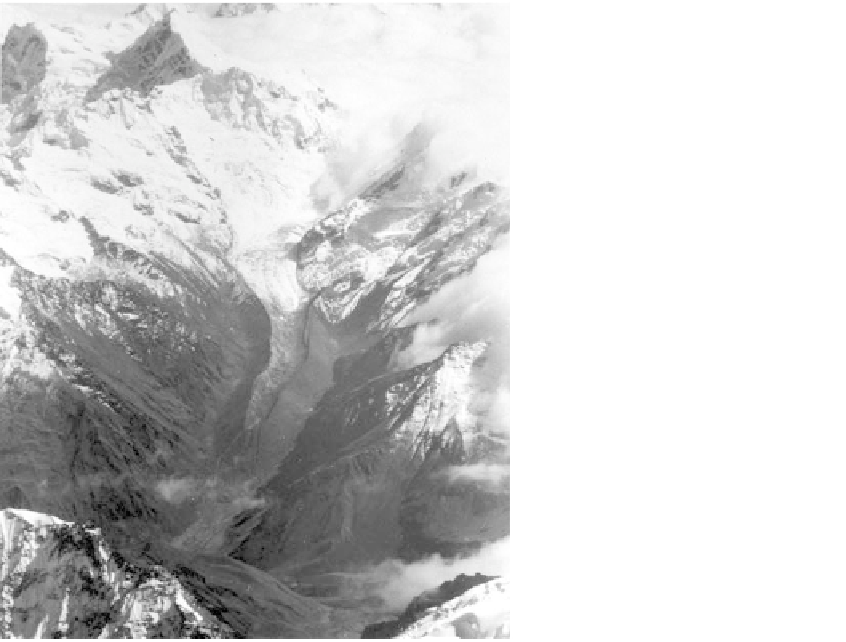Environmental Engineering Reference
In-Depth Information
Classes of Glaciers
Mountain or Valley Glaciers
, such as the one shown in
Figure 7.74,
are common today in
most high-mountain regions of the world. The landforms remaining from the erosive
action of mountain glaciers are illustrated in
Figure 7.75.
The glacier gouges out a U-
shaped valley, which has tributaries, less deeply eroded than the main valley, termed
hanging valleys. The headward reaches of the valleys end in cirques which often contain
lakes. Aretes are steep-sided divides separating valleys. As the glacier melts and recedes,
a series of moraine-dammed lakes is left behind. In the photo (Figure 7.75), a block of ice
has melted to form a kettle. The fjords of Norway are drowned valleys eroded by moun-
tain glaciers when the land was above water.
Piedmont glaciers
result from several valley glaciers coalescing into a single broad mass.
Continental glaciers
, also termed ice sheets or ice caps, overspread enormous land
masses. Their deposits are most significant from an engineering viewpoint. Only two
examples of continental glaciers exist today: Greenland and Antarctica.
Pleistocene Glaciation
General
The continental glaciation of the Pleistocene epoch is the most important event from an
engineering point of view. It sculptured the land to its present form and left significant soil
deposits over large areas of the northern United States and Europe. At least four times
during the past 3 million years of the Quaternary period, glaciers expanded to cover about
30% of the Earth's land area. About 10,000 to 15,000 years ago they began their latest
FIGURE 7.74
Receding mountain glacier (Andes
Mountains, Peru).


